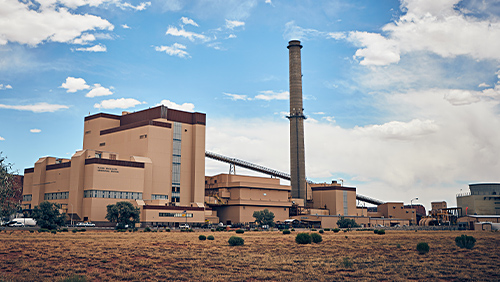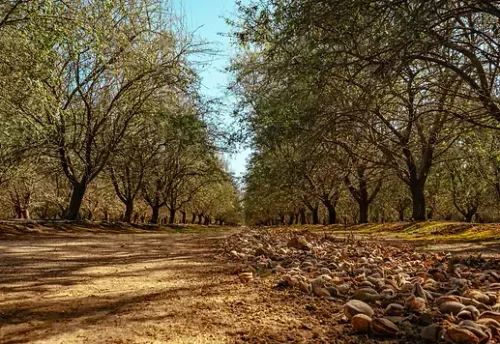It’s an appeal often made in modern US politics – doing right by those left behind.
Perhaps no place is more emblematic of that appeal than West Virginia, and perhaps no region in that state more so than the southern coal fields. It’s there a fossil developer is proposing the architecture of the ruling coal industry be used to build a $10bn decarbonized ammonia facility and is gathering the resources to do so.
“It’s world class, and it makes southern West Virginia, Mingo County, the catalyst for the 21st century’s energy revival,” said Adam Victor, the CEO of TransGas Development Systems, the developer of the project. “The people [here] are the heirs and descendants of the people that mined the coal that built the steel that built the Panama Canal.”
The Adams Fork Energy project in Mingo County, jointly developed by TransGas and the Flandreau Santee Sioux Tribe, is slated to reach commercial operations in 2027. Six identical 6,000 mtpd ammonia manufacturing plants are being planned on the site of a previously permitted (but not constructed) coal-to-gasoline facility.
ReSource exclusively reported this week that the state has issued a permit to construct the facility. TransGas owns 100% of the project now, though if the Tribe comes through with federal funding then it will become the majority owner.
TransGas itself could take on a liquidity partner to raise up to $20m in development capital for the project, Victor said. The company is not using a financial advisor now but will hire one in the future.
White & Case is TransGas’ legal advisor. The company is in discussions with Ansaldo Energia, of Italy, about construction.
“The project is not averse to talking to private equity or investment bankers, because nothing has been decided right now,” Victor said, noting that the company is just beginning talks with infra funds and is eager to do so. “The project will be looking for an EPC.”
The first of the six plants will cost about $2bn, but each one will get successively less expensive, Victor said. Total capex is about $10bn, though there is discussion of acquiring adjacent land to double the size of the project – or 12 plants in all producing 6,000 mtpd each.
TransGas has the support of West Virginia politicians like Sen. Joe Manchin and Gov. Jim Justice, Victor said. Financing the project will be a function of the offtake.
Electricity for data centers, or ammonia for export?
The company is conducting a market analysis to determine avenues for offtake, Victor said. They could do partial electricity generation onsite to power a data center, with the remainder of the hydrogen being used to make ammonia for shipment overseas.
Depending on the needs of offtakers, the facility could also do one or the other entirely, he said.
“This could basically become a 6,000 MW campus to become the center of data centers in the United States,” Victor said, noting that the region is much less prone to natural disasters than some others and is high enough in elevation to escape any flooding. “I think we could rival Loudoun County [Virginia] as where data centers should be located.”
Adams Fork sits on the largest mine pool reservoir in the eastern US, Victor noted. Data centers need constant cooling, particularly new chip technology that requires liquid cooling.
TransGas will know in a matter of weeks if it’s going to go the electrical route, Victor said. There are only five companies in the world with data centers large enough to efficiently offtake from it: Amazon, Microsoft, Google, Meta and Apple.
If not, the facility will continue down the path of selling the decarbonized ammonia, likely to an oil company or international ammonia buyer like JERA in Japan.
Partnering with a tech company will make it easier to finance the project because of high credit ratings, Victor said. International pressure on oil companies could affect those credit ratings.
He added: “Once we have the offtake, we think we could have a groundbreaking this year.”
Two ways of shipping
For ammonia production the facility could use the same shipping channels the coal industry uses – either to the Big Sandy River to be sent by barge on the Ohio to New Orleans, or rail to ports in Baltimore; Norfolk, Virginia; and Savanna, Georgia.
By rail, two 40-car trains per day would take ammonia to port. Norfolk Southern and CSX both operate in the region.
Another option is to have a fleet of 50 EV or hydrogen-powered trucks to transport ammonia to the Big Sandy where electric-powered barges can take it to the Gulf, Victor said. That latter option could mean a lower CI score because it will eliminate rail’s diesel power.
Mercedes-Benz and Volvo both make the kind of trucks used for this work in Europe and Asia, he said. Coal mines in the region use diesel trucks in fleets as numerous as 500, and the original TransGas coal plant was permitted for 250 trucks per day.
“This is something that our offtake partner is going to determine,” he said. Japan would likely want the ammonia in the Gulf of Mexico, whereas European shipping companies would want it on an Atlantic port.
The LNG financial model
The offtakers themselves could fund the facility, Victor said.
“The financial model for this is the financial model for funding LNG terminals,” he said. “The same teams that put those large facilities together, financial teams, would be the same teams that we’re talking to now.”
The offtakers may also dictate who they want to be the financial advisor, he said.






